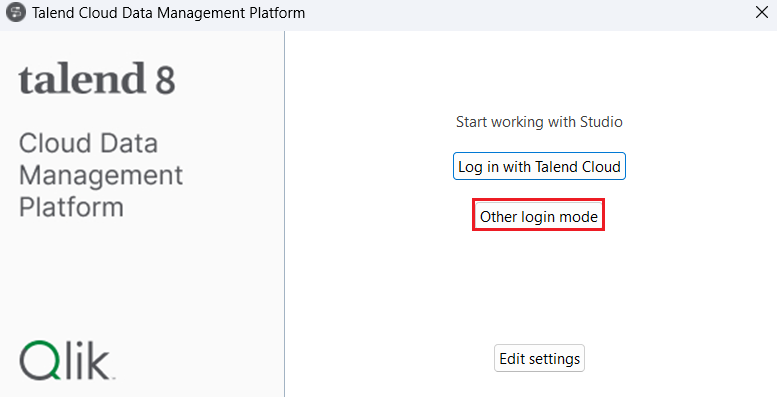Discover how a bimodal integration strategy can address the major data management challenges facing your organization today.
Get the Report →Connect to Coinbase Data and Transfer Data in Talend
Integrate Coinbase data with standard components and data source configuration wizards in Talend Open Studio.
This article shows how you can easily integrate the CData JDBC driver for Coinbase into your workflow in Talend. This article uses the CData JDBC Driver for Coinbase to transfer Coinbase data in a job flow in Talend.
Connect to Coinbase in Talend as a JDBC Data Source
You can follow the procedure below to establish a JDBC connection to Coinbase:
- Add a new database connection to Coinbase data: To add a new connection, expand the Metadata node, right-click the Db Connections node, and then click Create Connection.
- In the resulting wizard, enter a name for the connection.
On the next page, select Generic JDBC from the DB Type menu and enter the JDBC URL.
Start by setting the Profile connection property to the location of the Coinbase Profile on disk (e.g. C:\profiles\Coinbase.apip). Next, set the ProfileSettings connection property to the connection string for Coinbase (see below).
Coinbase API Profile Settings
Coinbase uses OAuth-based authentication.
First you need to register an OAuth app with Coinbase. This is done from your account under 'Settings' > 'API Access' > 'New OAuth2 Application'.
After setting the following connection properties, you are ready to connect:
- AuthScheme: Set this to OAuth.
- InitiateOAuth: Set this to GETANDREFRESH. You can use InitiateOAuth to manage the process to obtain the OAuthAccessToken.
- OAuthClientId: Set this to the ClientID that is specified in you app settings.
- OAuthClientSecret: Set this to the ClientSecret that is specified in you app settings.
- CallbackURL: Set this to the Redirect URI you specified in your app settings.
- InitiateOAuth: Set this to GETANDREFRESH. You can use InitiateOAuth to manage the process to obtain the OAuthAccessToken.
Built-in Connection String Designer
For assistance in constructing the JDBC URL, use the connection string designer built into the Coinbase JDBC Driver. Either double-click the JAR file or execute the jar file from the command-line.
java -jar cdata.jdbc.api.jarFill in the connection properties and copy the connection string to the clipboard.
![Using the built-in connection string designer to generate a JDBC URL (Salesforce is shown.)]()
A typical JDBC URL is below:
jdbc:api:Profile=C:\profiles\Coinbase.apip;Authscheme=OAuth;OAuthClientId=your_client_id;OAuthClientSecret=your_client_secret;CallbackUrl=your_callback_url;- AuthScheme: Set this to OAuth.
- Enter the path to the cdata.jdbc.api.jar file, located in the lib subfolder of the installation directory.
![The connection to the JDBC data source. (QuickBooks is shown.)]()
- Right-click the connection and then click Retrieve Schema.
- Click Next with the default options to select the tables you want to import.
- Finish the wizard with the default options.
Output the Deposits Table to a Flat File
You can follow the procedure below to transfer the Deposits table to a flat file output component:
- In the Table Schemas node, drag the tables to the workspace.
- In the dialog that is displayed, select the tJDBCInput component.
- Next, drag a tFileOutputDelimited component from the Business Intelligence tab of the Palette into the workspace.
- Right-click the Deposits tJDBCInput component and drag a vector to the output file.
![A simple transfer to a flat file. (QuickBooks is shown.)]()
Run the project to transfer the data.









